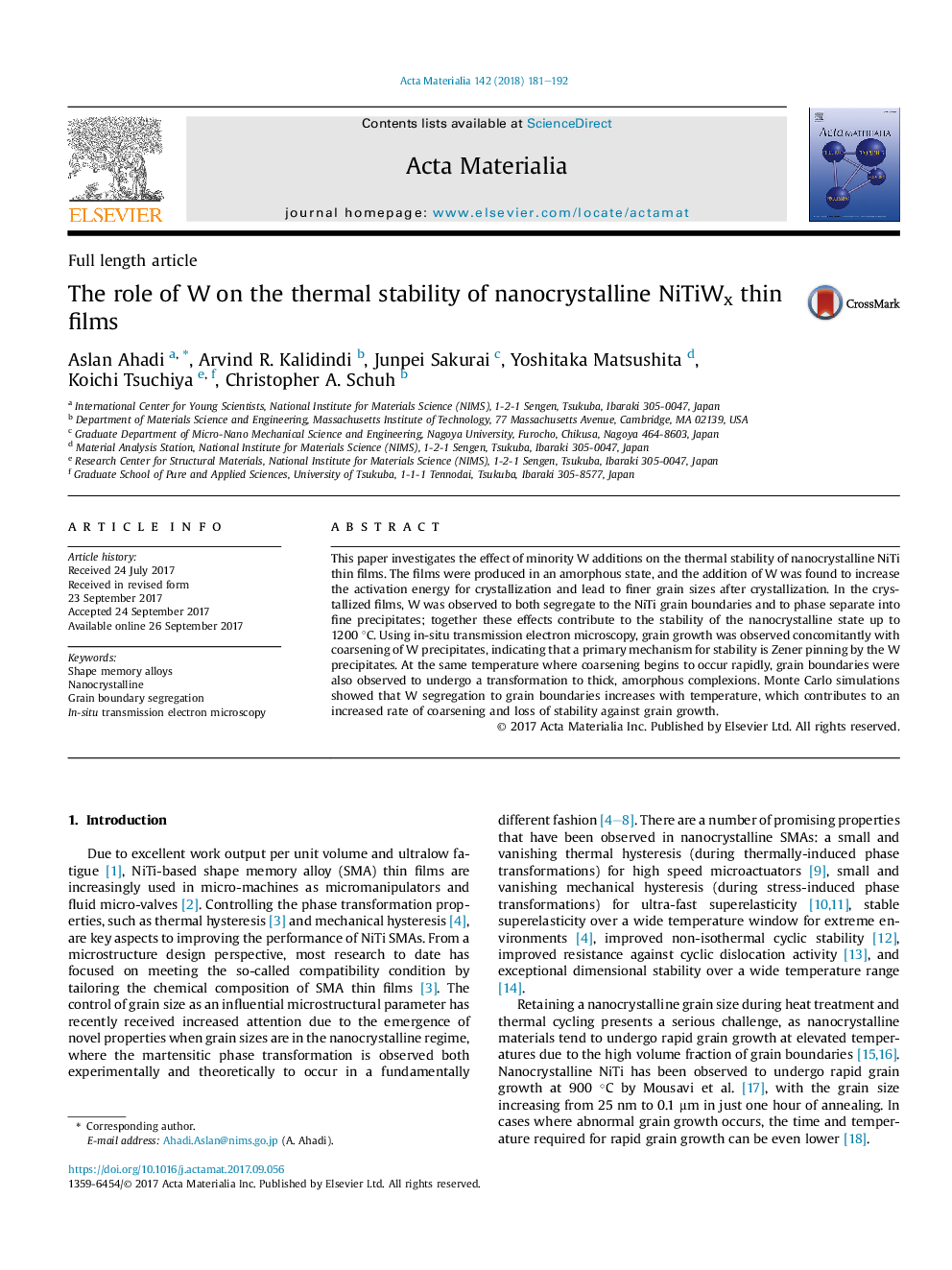| Article ID | Journal | Published Year | Pages | File Type |
|---|---|---|---|---|
| 5435703 | Acta Materialia | 2018 | 12 Pages |
This paper investigates the effect of minority W additions on the thermal stability of nanocrystalline NiTi thin films. The films were produced in an amorphous state, and the addition of W was found to increase the activation energy for crystallization and lead to finer grain sizes after crystallization. In the crystallized films, W was observed to both segregate to the NiTi grain boundaries and to phase separate into fine precipitates; together these effects contribute to the stability of the nanocrystalline state up to 1200 °C. Using in-situ transmission electron microscopy, grain growth was observed concomitantly with coarsening of W precipitates, indicating that a primary mechanism for stability is Zener pinning by the W precipitates. At the same temperature where coarsening begins to occur rapidly, grain boundaries were also observed to undergo a transformation to thick, amorphous complexions. Monte Carlo simulations showed that W segregation to grain boundaries increases with temperature, which contributes to an increased rate of coarsening and loss of stability against grain growth.
Graphical abstractDownload high-res image (556KB)Download full-size image
